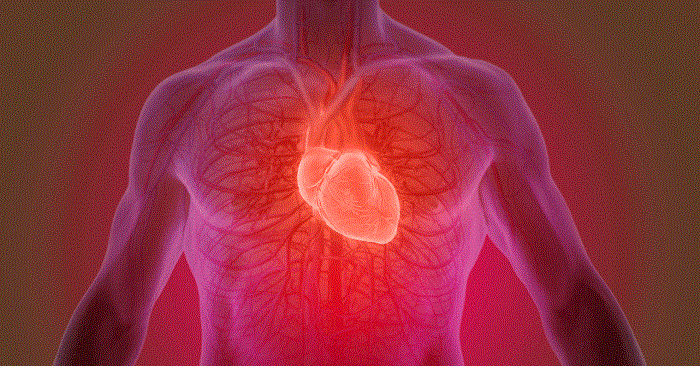Health
Study Reveals Proteins’ Potential in Lowering Risk of Heart Damage

- Study reveals proteins’ potential to reduce risks of further heart damage, offering hope for improved cardiac health.
- Promising findings suggest proteins could serve as effective protectors against ongoing heart damage, signaling a breakthrough in heart health research.
Compelling new research shows anti-inflammatory molecules reduce the scar size on the heart, leading to improved chances of long-term cardiac function.
Research into the protective effects of two anti-inflammatory molecules following a heart attack has found that two proteins reduce the inflammatory response and scarring within the injured heart.
Transforming growth factor-beta1 (TGFβ1) and Heligmosomoidespolygyrus TGM (HpTGM) are two anti-inflammatory molecules found to be beneficial in therapy. Patients with acute heart attacks (ST elevation myocardial infarction, or STEMI) are very likely to survive if they undergo timely reopening of the occluded coronary artery (coronary reperfusion) in specialized clinical centres.
However, despite major improvements in treatment, progression to heart failure still represents a major clinical problem.
‘Correlates with a reduction infarct size after three months’
Professor Helen Arthur, Professor of Cardiovascular Biology at Newcastle University, explains: “Coronary reperfusion after STEMI is standard therapy to salvage ischemic heart muscle.
“However, evidence suggests that the subsequent inflammatory response that the body initiates to repair the damaged heart tissue can also cause further loss of viable heart muscle, and the more muscle that is lost the greater the risk of subsequent progression to heart failure.
“The reason for this study was to investigate the potential protective effects of TGFβ1 as a possible intervention to minimize this additional damage to the heart beyond the ischemic damage caused by the heart attack itself.”
The research team found that levels of an important anti-inflammatory protein TGFβ1 in the blood of STEMI patients 24 hours after reperfusion correlated with a reduction in infarct size after three months. To investigate this further they used an established mouse model of a heart attack to test the protective effects of TGFβ1, a protein known to be released in the body in response to tissue injury, and its mimic HpTGM.
‘The investigators were surprised’
A protein produced by a parasitic worm helps evade the immune response and thereby enable the worm to live within the tissue lining the gut. Intra-vascular delivery of either of these naturally occurring anti-inflammatory proteins reduced the injurious inflammatory response within the heart and, more importantly, the extent of heart injury, as evidenced by the reduced mature scar size.
The investigators were surprised to find almost identical beneficial effects of TGFβ1 and HpTGM treatment. Although they are both evolutionarily unrelated, both these molecules interact with cells in a similar manner by activating the same signalling pathway. The dose of anti-inflammatory therapy was given at the time of reperfusion, which corresponds to a clinically useful time for a therapeutic intervention in humans.
Investigators could attribute the beneficial outcomes to the protective effect of these molecules on endothelial cells (the cells lining the blood vessels that help to regulate the exit of pro-inflammatory white blood cells from the circulation and enter the injured tissue).
TGFβ1 has well-established anti-inflammatory properties, whereas HpTGM is a parasitomimetic with great clinical potential. Recent work in the Maizels lab at the University of Glasgow has also shown that delivery of HpTGM has a major anti-inflammatory effect in mouse models of colitis or airway inflammation, taking advantage of the product evolved by a parasite to quell the immune response to its presence.
Prof Helen Arthur concluded: “The current study shows that exogenous delivery of HpTGM at the time of coronary artery reperfusion dampens the proinflammatory response of coronary endothelial cells and reduces cardiac injury, leading to increased myocardial salvage and reduced scar size, with the corollary of improved prospects for long-term cardiac function.
“The use of HpTGM as an anti-inflammatory therapy in treating heart attack patients is clearly an exciting prospect that requires further translational studies.”
Source: Newcastle University

























































